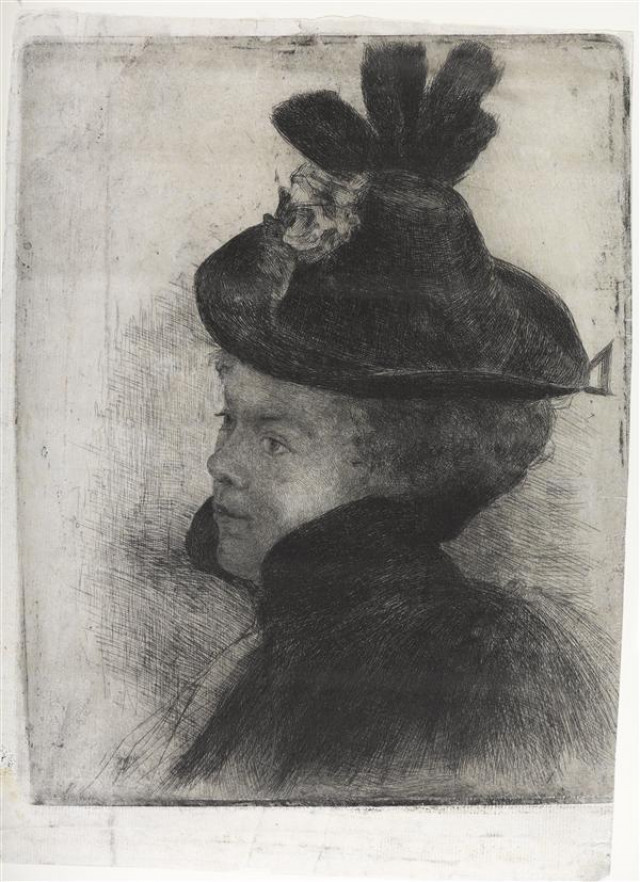Piet Mondrian, Portrait of a Lady, 1896-1897, etching, ink on paper, Collection Art Museum The Hague.
This portrait of a woman is an etching, one of the few Mondrian ever created. In his last year of study at the Rijksakademie voor Beeldende Kunsten, Mondrian probably made an attempt to learn etching in order to appeal to a different market with prints and reproductions and to make a little more money. In the end, however, he hardly ever made etchings.
Etching is a so-called intaglio technique in which a plate, usually made of copper or zinc, is covered with an acid-resistant layer of wax and then an image is scratched into the wax with a needle. The plate is then immersed in an acid bath that bites the exposed drawing off the plate. After the wax layer is removed, ink is rubbed into the grooves, after which a print is created on a special etching press. Due to the extremely high pressure, the paper is pressed into the grooves and comes into contact with the ink. It is the opposite of letterpress printing, which also includes woodcut and linocut. The following video from the Van Gogh Museum explains and demonstrates the etching technique.
Mondrian’s print is most likely a proof. This can be seen by the stains, fingerprints, and visible edges of the plate. The grayish background reveals the ink that was left on the plate during the “burning” process, or the brushing away of ink that did not get into the grooves. The artisans of etching, who used this technique mainly for reproductions and in letterpress printing, wanted an etching not to be seen to be an etching, and for this type of ink residue not to be visible at all on a final print.






